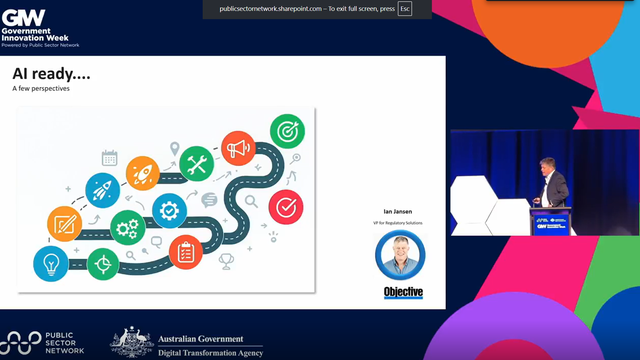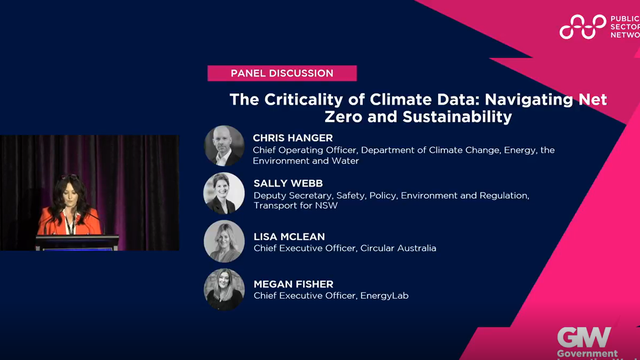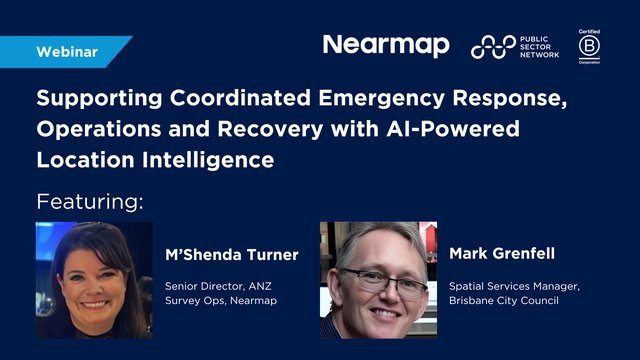Part of the Q2 Data Management & Analytics National Insights Series

Government Keynote:
At a recent Data Virtual Event, we heard from Dr. Susie Kluth, Chief Data Officer, Department of Education, Skills and Employment on how to use integrated data for deeper insights .
Making Sense of Data
Across governments in Australia and around the world, data is being produced and used at a phenomenal pace. Yet, not all of it is useful in the format this it is produced in, or on its own. Moreover, data by itself doesn’t necessarily mean anything unless it is analysed and assessed, particularly in large departments. For that reason, Dr. Susie Kluth, the Chief Data Officer at the federal Department of Education, Skills, and Employment (DESE), says that their goal is to “connect the people to the data.” In many ways, their department is one of the biggest with “a really broad remit.” They cover the education system, but all the way “from early childhood education, through to school and vocational education, to training and higher education, and then all the way into the employment services area.” There are people in each part of that process and there is a tremendous amount of data too, “but our challenge is how do we join up not just the people, but also the data, to tell a coherent story?” The sectors themselves “don’t operate in isolation and actually feed into each other,” but there is also not a direct correlation between each, and not always a clear link.
The purpose of the department however is clear, and that is “to contribute to Australia’s economic prosperity and social wellbeing by creating opportunities and driving better outcomes for people through education, skills and employment pathways.” But, even with this remit and purpose, there has never been “evidence-based analysis to inform future policies and programs. We really need to be able to understand the interactions between the sectors in our department.” To achieve this, the department created the ‘Education, Skills and Employment National Data Set’ (ESENDA), known colloquially as “the golden thread.” In a conceptual way, “it links people’s journeys through time to see how they interact with our systems.” Ultimately, this is to develop “the best possible outcomes,” and thus the essential part is “data integration.”
Using Data Integration To Create Solutions
The concept of data integration can mean different things to different people, but for this purpose, it means “joining, combining or linking data from more than one source.” Generally, the data needs to have shared characteristics, so that it should be “about people or businesses,” and it can also be “integrated over time to create a longitudinal dataset.” But to really get the most out of the data, it also needs to interact with other datasets. For instance, “educational outcomes are not just affected by what’s happening in the classroom, they’re also affected by other things like health and family matters to name a few. So we needed to bring in data from outside our department too.”
In an Australian government context, the main holder of data is the ABS, and they control two data portals that are extremely useful for this purpose. The first is the “Multi-Agency Data Integration Project (MADIP), which brings together a whole range of government administrative data.” This includes things like family and household data from the census, migration and international student data, health data including Medicare and pharmaceutical information, apprenticeship and higher education data, government payment data from DSS, and “most importantly for us in terms of measuring outcomes, income data from the ATO.” The second portal is the “Business Longitudinal Analysis Data Environment (BLADE), which uses business tax information to provide a better understanding of Australian businesses and the economy.” Taken together, these portals are very useful for data integration and analysis. The ABS also does work related to “privacy, governance, and matching,” which is also useful. On top of that, the collaborative relationship with the ABS “means that we can reuse code, which has been beneficial at times.”
The purpose of the project has been to get an understanding of how data intersects with people, so “we have used a lot of information on demographics, family characteristics, socio-economic factors, geographic information, migration information, social security data, and health data, together with government policies and programs. This has been in addition to the data that we have available to us already in terms of childcare, higher education, and training data.” All of this data, mixed together with existing datasets and portals means that “essentially we are going to be able to answer any policy or program question that we can put to it.” However, it is also a complicated process, in part because “school education is a state responsibility, whilst childcare and higher education are a federal responsibility, so we need to work with our counterparts in the states and territories to obtain some of the information.” That is complicated and may require “a significant amount of negotiation,” so, therefore, the project is being conducted in several phases, with the more complex elements scheduled for a later period.
Some Real-Life Examples Of Data Integration
Despite some challenges and expected future phases, the ESENDA, combined with other datasets, has already produced some results, including some real-life outcomes. For instance, when schools closed during the pandemic, “the government was looking at whether or not they should re-open schools, and what the risk was going to be.” One way to measure that was by “looking at the vaccination rates of teachers.” So together with the Department of Health, “data from the Australian Immunisation Register, MADIP and BLADE,” DESE was able “to identify teachers” through a number of sources, and that then “allowed us to look at the vaccination status of teachers.” This was then further broken down into teachers who had no doses, one dose, two doses, and even three doses, as well as teachers who were “eligible for their third vaccine dose.” Overall, there was “a really good take up rate of vaccination in teachers, and this helped to inform the government about then they should consider re-opening schools.”
In another example, data was used to answer one of the questions in the government’s Closing the Gap report, namely that an increase in childcare for Indigenous children will close the gap “by the time they start primary school.” To answer this, data was used to “determine what percentage of children across the board have attended childcare at least once in their lifetime.” There was a 12% difference between Aboriginal and Torres Strait Islander children compared to the general population. To make up that difference, “2,055 more Aboriginal children would need to be in childcare.” The second part was to look at the development of children “who went to childcare versus those who did not, and then to compare between Aboriginal children and the general population.” The results showed that “Aboriginal and Torres Strait Islander children that did attend childcare did have improved outcomes,” however, that was not the whole story. Further calculations suggested that attending childcare would “only make a difference to 155 children.” What this means in practical terms is that “a lot more needs to be done rather than just getting children just to attend childcare in order to get those children on track.”
Another project – that was incredibly useful during the pandemic and recent natural disasters – was one “where we used educational data (ie: location of schools) and overlaid information related to natural disasters and adverse weather events.” This was in partnership with the Bureau of Meteorology, and “we were able to use this information to inform our schools very quickly every day about how many children were being affected, or how many schools may need to close because of the floods.” During the pandemic, “we could also tell how many schools or students were affected by lockdowns and travel restrictions.”
Other active projects include a “skills, education and employment data platform,” and a project to determine “if internships lead to apprenticeships.” There is also a project focused on “regional data,” to see if there is a link between regional education and employment outcomes. The point is that there are endless possibilities.
“We have a long way to go on our data integration journey, and I think we are really only just at the beginning, though I’m really looking forward to seeing where it takes us, and where it can take all of you.”
Dr. Susie Kluth, Chief Data Officer, Department of Education, Skills, and Employment



































